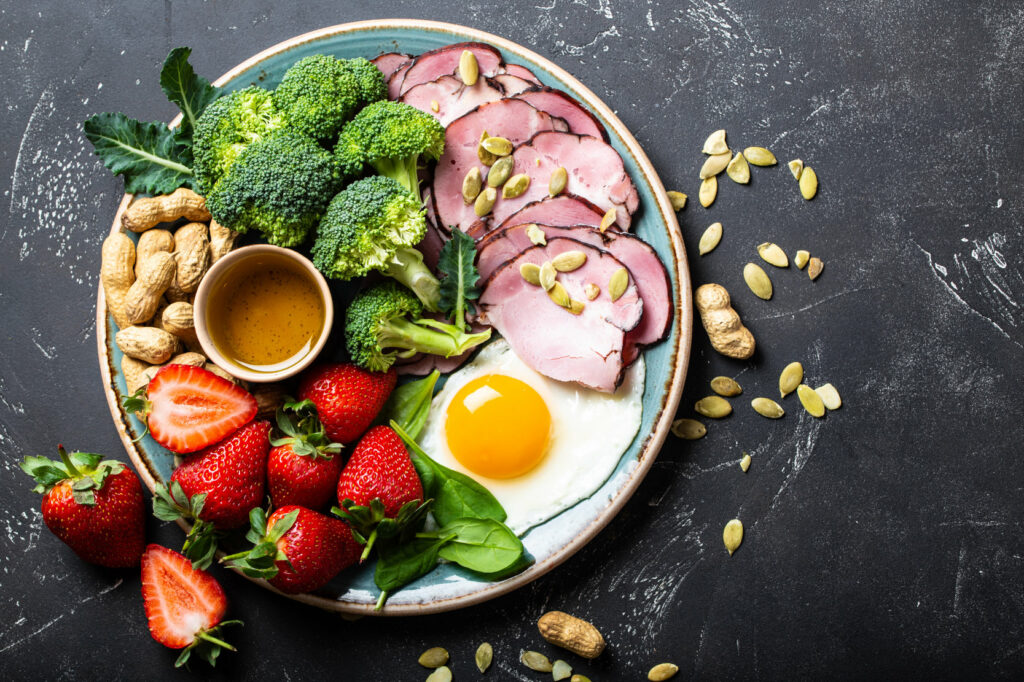The ketogenic diet, or "keto" for short, has become increasingly popular among women looking to lose weight and improve their overall health. It is a high-fat, low-carb diet that has been shown to promote weight loss and improve various health markers. The idea behind the diet is that by drastically reducing your carb intake and increasing your fat intake, your body will enter a metabolic state called "ketosis," in which it begins to burn fat for fuel instead of carbs.
With so much conflicting information out there, it can be difficult to know where to start.
That's why we've put together this ultimate guide to the keto diet for women, to help you understand the science behind the diet and provide you with the tools you need to achieve success.
The ketogenic diet is a high-fat, low-carb diet that works by drastically reducing your carb intake and increasing your fat intake. This leads your body to enter a metabolic state called "ketosis," in which it begins to burn fat for fuel instead of carbs. This metabolic state is achieved when the carbohydrate intake is low enough and the body starts producing ketones, compounds made from fat, which can be used as an energy source.
The state of ketosis occurs when the body is deprived of carbohydrates and produces ketones instead for energy. This metabolic process is linked to weight loss since fat is broken down as a primary fuel source. Additionally, ketones burn cleaner than glucose and can produce improved energy levels and mental clarity. Moreover, ketosis has been found to improve various markers of metabolic health, such as cholesterol and blood sugar levels. This is because ketones can boost insulin sensitivity and reduce inflammation in the body, resulting in better blood sugar control and lower cholesterol levels.
Ketosis is an important metabolic mechanism that offers multiple health benefits. It is initiated when the body is in a state of carbohydrate deprivation. As a result, the liver produces ketones and uses these ketones as its primary fuel source. This allows our bodies to access stored fat and break it down into energy; all while experiencing less biochemical damage along the way. Plus, ketone production helps to better our metabolic health via improved cholesterol and blood glucose levels.
Lastly, the cleaner burning ketones can provide us with an optimal biological outcome, improving our overall energy levels and mental clarity. For these reasons and more, we should further explore the effects of ketosis for the purpose of promoting a healthier lifestyle and optimizing our physiology.
Research has shown that the ketogenic diet can be particularly effective for women. One study found that women on the diet lost more weight and body fat than men, even when both groups were following the same calorie restrictions. This could be because women have a different hormonal profile and metabolism than men, which may respond better to the changes in macronutrient intake that the keto diet requires.
Additionally, the diet has been found to improve markers of metabolic health, such as cholesterol and blood sugar levels. It could be helpful for women that suffer from Polycystic Ovary Syndrome (PCOS) which is linked to insulin resistance and metabolic dysfunction. The Keto diet has been reported to be effective in reducing symptoms of PCOS by reducing insulin resistance and improving blood sugar control.

Calculating your macros on the keto diet can be done using a simple formula:
So, in the example above, you would need to consume 156 grams of fat, 100 grams of protein, and 50 grams of carbs per day.
It's important to note that these calculations are an approximation, and your specific macro needs may vary depending on factors such as your age, weight, activity level, and individual goals.
When following the ketogenic diet, it is important to avoid foods that are high in carbohydrates. Some of the foods that should be avoided on the keto diet include:

It's also important to be mindful of the beverages you consume, as many are high in sugar and carbs, such as soda, juice, and sweetened coffee drinks.
It's also worth noting that some foods that are considered healthy, such as whole grains and fruits, are avoided on the keto diet due to their high carb content. It's important to focus on consuming healthy fats, proteins, and non-starchy vegetables instead.
A sample keto meal plan for one day could look like this:
Breakfast:
Snack:
Lunch:
Snack:
Dinner:
Dessert:
This meal plan includes a balance of healthy fats, protein, and non-starchy vegetables, which are staples of the keto diet. Additionally, it is important to note that it is always recommended to consult with a registered dietitian for personalized meal plans.
When following the ketogenic diet, it is important to avoid foods that are high in carbohydrates. Some of the foods that should be avoided on the keto diet include:
It's also important to be mindful of the beverages you consume, as many are high in sugar and carbs, such as soda, juice, and sweetened coffee drinks.
It's also worth noting that some foods that are considered healthy, such as whole grains and fruits, are avoided on the keto diet due to their high carb content. It's important to focus on consuming healthy fats, proteins, and non-starchy vegetables instead.
Yes, women can follow the keto diet. In fact, research has shown that the ketogenic diet can be particularly effective for women, helping them lose weight and improve their overall health.
The keto diet can be safe for women when followed under the guidance of a healthcare professional and registered dietitian. It's important to make sure you are getting enough nutrients and not to restrict too much the calorie intake.
The keto diet may affect your menstrual cycle, especially if you are following a very low-carb version of the diet or if you are calorie restricting. Women who have menstrual irregularities or who are trying to conceive should consult with a healthcare professional before starting the diet.
The keto diet may be helpful for women with Polycystic Ovary Syndrome (PCOS) as it has been found to improve insulin resistance and blood sugar control, which are common issues in women with PCOS. However, it is important to consult with a healthcare professional and registered dietitian before starting the diet.
The keto diet can help to preserve muscle mass, as long as adequate protein is consumed. It's important to ensure that you are getting enough protein in your diet to maintain muscle mass.
Most fruits are high in carbohydrates and should be limited or avoided on the keto diet. Berries and avocado are considered keto-friendly fruits and can be consumed in moderation.
The ketogenic diet can be a powerful tool for weight loss and improved health for women. It is a high-fat, low-carb diet that works by drastically reducing your carb intake and increasing your fat intake, leading to a metabolic state called "ketosis" in which the body starts burning fat for fuel instead of carbs. This metabolic state is achieved when the carbohydrate intake is low enough and the body starts producing ketones, compounds made from fat, which can be used as an energy source.
By understanding the science behind the diet, planning your meals, and following some simple tips for success, you can achieve your goals and feel your best. Remember to be patient, stay hydrated and get enough sleep, and you will be on your way to success. Additionally, it's always recommended to consult with a registered dietitian for personalized macro calculations and meal plans.
The ketogenic diet has been shown to be especially effective for women, helping them lose weight and improve their overall health. With the right approach, you can reach your weight loss goals and improve your health in the process.
